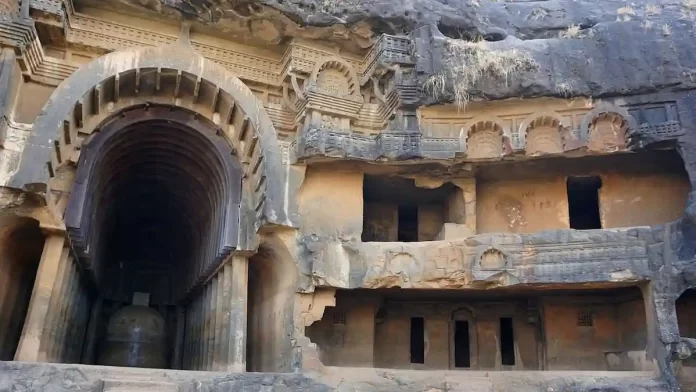Buddhism, at its core, teaches the principles of renunciation and non-attachment to material possessions. However, a closer examination of the Buddhist caves, viharas, and rock-cut shrines raises several concerns.
This article aims to critically evaluate this architectural tradition within the context of Buddhist teachings, highlighting contradictions, environmental impacts, labor exploitation, and the misleading symbolism of peace and renunciation.
Contradictory with Teachings of Renunciation
The construction of lavish viharas and chaityas stands in stark contradiction to the teachings of renunciation in Buddhism.
The Buddha himself advocated for a simple and austere way of life, emphasizing the impermanence of worldly possessions.
These opulent structures, adorned with intricate carvings and elaborate decorations, seem to glorify materialism rather than promote detachment.
Dependency on Unjust Rulers and Merchants
It is troubling to note that Buddhist monastic establishments often relied on the generosity of rulers and wealthy merchants to finance the construction of these grand structures.
In contrast, other spiritual traditions, like the medieval Chishti Sufi saints, explicitly refused help from ruling classes, preferring to lead lives of simplicity and self-sufficiency.
This raises questions about the authenticity and integrity of Buddhist monastic practices.
For instance, one of the greatest Buddhist patron Ajatshatru forcefully seized the Magadhan throne from his father Bimbisara who was a contemporary and friend of Gautam Buddha.
Irreparable Destruction of Natural Beauty
The creation of Buddhist caves and rock-cut shrines involved extensive quarrying and excavation, resulting in irreversible damage to natural landscapes.
These architectural endeavours, though impressive in their craftsmanship, have altered the inherent beauty of the surroundings.
The destruction of caves, cliffs, and hillsides is a significant loss for biodiversity and undermines the very notion of reverence for nature that Buddhism espouses.
Economic and Environmental Unsustainability
The construction and maintenance of these monumental structures required vast resources, both financial and material.
The funds allocated to building lavish viharas and chaityas could have been channeled towards more sustainable and socially beneficial causes.
Moreover, the extraction of building materials and the subsequent waste generation had detrimental environmental consequences, further compromising the principles of Buddhist ecological mindfulness.
Exploitation of Poor Labourers
Historical evidence suggests that the construction of these edifices involved the labor of countless impoverished workers.
These labourers were subjected to harsh working conditions, often receiving minimal compensation for their efforts.
The forced labor system of the Gupta Empire is well documented in Historical Records.
This exploitation of vulnerable individuals contradicts the compassionate and egalitarian principles that Buddhism upholds.
Destruction of Natural Habitat
The extensive excavation and construction activities associated with Buddhist caves and rock-cut shrines resulted in the death of numerous animals and the destruction of their natural habitats.
The disruption caused to ecosystems is an unfortunate consequence of these architectural pursuits, standing in direct contrast to Buddhism’s reverence for all living beings.
False Symbol of Peace and Renunciation
The grandeur of Buddhist caves, viharas, and rock-cut shrines can create a misleading image of peace and renunciation.
The ostentatious display of wealth and intricate decorations often overshadow the essence of Buddhism, which lies in simplicity and inner transformation.
These structures may give the impression of spiritual progress, but they can easily distract from the true path to enlightenment.
Concluding Remarks
While Buddhist caves, viharas, and rock-cut shrines may be marvels of architectural and artistic achievement, they present several critiques when viewed through the lens of Buddhist and constitutional teachings.
The contradiction with renunciation, reliance on unjust rulers and merchants, destruction of natural beauty, economic and environmental unsustainability, exploitation of labourers, death of countless flora and fauna, and false symbolism all call for reflection and reassessment of this architectural tradition.
Rather than blind glorification of extravagance of past icons and symbols, it is essential to align our actions and creations with the core principles of an ethical and practical faith system, ensuring that our endeavours genuinely reflect the path of personal, public, national and global welfare besides compassion, and environmental stewardship as they all are beautifully reflected in Fundamental duties of the Indian constitution.
Quoting the Buddha himself: “The root of suffering is attachment.” It is crucial to critically evaluate our actions to ensure they do not contradict the essence of the teachings we hold dear.
Also Read| Monasticism and Islam: Critical Analysis
